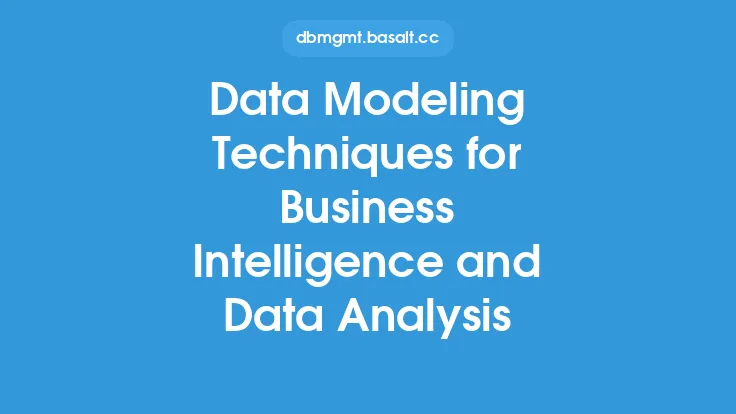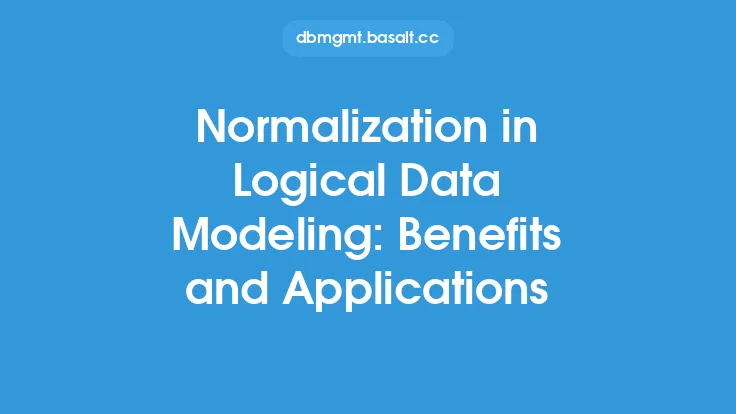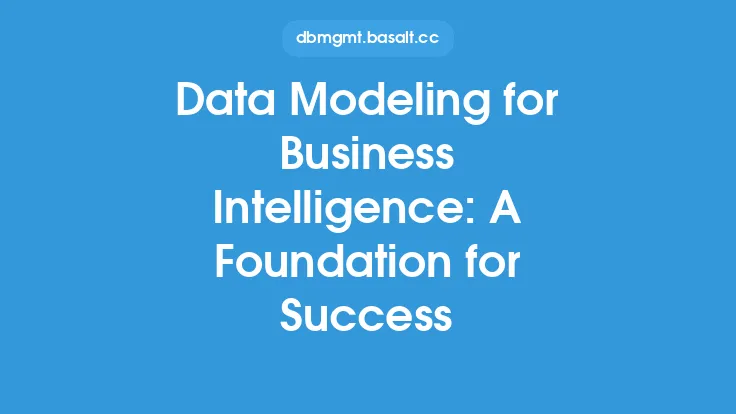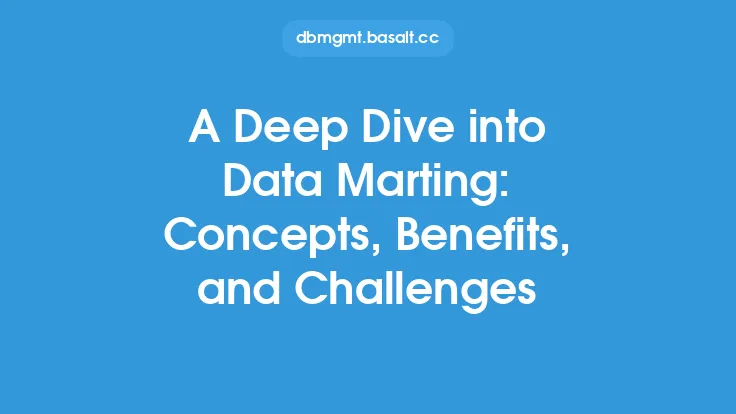Business intelligence (BI) data modeling is a crucial aspect of creating a robust and efficient business intelligence system. It involves the process of creating a conceptual representation of the data used in an organization, with the goal of supporting business decision-making. At its core, BI data modeling is about identifying, analyzing, and representing the data entities, relationships, and rules that govern an organization's operations. This process enables organizations to create a unified view of their data, which can be used to inform strategic decisions, optimize operations, and drive business growth.
Introduction to Business Intelligence Data Modeling
BI data modeling is a multidisciplinary field that draws on concepts from data modeling, business analysis, and software engineering. It involves a deep understanding of the organization's business processes, data structures, and reporting requirements. The goal of BI data modeling is to create a data model that accurately reflects the organization's business operations and provides a solid foundation for business intelligence applications. A well-designed BI data model should be able to support a wide range of business intelligence functions, including reporting, analytics, and data mining.
Key Concepts in Business Intelligence Data Modeling
There are several key concepts that are essential to understanding BI data modeling. These include:
- Entities: Entities are the objects or concepts that are being modeled, such as customers, products, or orders. Entities can be either physical or abstract and are typically represented as tables or objects in the data model.
- Attributes: Attributes are the characteristics or properties of an entity, such as customer name or order date. Attributes can be either simple (e.g., a single value) or complex (e.g., a collection of values).
- Relationships: Relationships define how entities interact with each other, such as a customer placing an order. Relationships can be either one-to-one, one-to-many, or many-to-many.
- Data types: Data types define the format and structure of the data, such as integer, string, or date. Data types are essential for ensuring data consistency and accuracy.
- Data governance: Data governance refers to the policies, procedures, and standards that govern the management and use of data within an organization. Data governance is critical for ensuring data quality, security, and compliance.
Benefits of Business Intelligence Data Modeling
BI data modeling offers numerous benefits to organizations, including:
- Improved data consistency: A well-designed BI data model ensures that data is consistent across the organization, reducing errors and inconsistencies.
- Enhanced data quality: BI data modeling helps to identify and address data quality issues, such as missing or duplicate data.
- Increased data accessibility: A unified data model provides a single, authoritative source of data, making it easier for users to access and analyze data.
- Better decision-making: By providing a comprehensive and accurate view of the organization's data, BI data modeling enables better decision-making and strategic planning.
- Reduced costs: A well-designed BI data model can help reduce costs by eliminating data redundancy, improving data processing efficiency, and reducing the need for manual data integration.
Business Intelligence Data Modeling Techniques
There are several techniques used in BI data modeling, including:
- Entity-relationship modeling: This technique involves creating a graphical representation of the entities and relationships in the data model.
- Dimensional modeling: This technique involves creating a data model that is optimized for querying and analysis, using a star or snowflake schema.
- Object-oriented modeling: This technique involves creating a data model that represents the data as objects, with properties and behaviors.
- Data warehousing: This technique involves creating a centralized repository of data, optimized for querying and analysis.
Tools and Technologies for Business Intelligence Data Modeling
There are several tools and technologies available for BI data modeling, including:
- Data modeling software: Such as ER/Studio, PowerDesigner, or Enterprise Architect.
- Database management systems: Such as Oracle, Microsoft SQL Server, or IBM DB2.
- Data integration tools: Such as Informatica, Talend, or Microsoft SQL Server Integration Services.
- Business intelligence platforms: Such as Tableau, QlikView, or SAP BusinessObjects.
Best Practices for Business Intelligence Data Modeling
To ensure the success of a BI data modeling project, it is essential to follow best practices, including:
- Involve stakeholders: Engage with business stakeholders to ensure that the data model meets their needs and requirements.
- Use a iterative approach: Develop the data model in an iterative and incremental manner, with regular feedback and validation.
- Use data modeling standards: Adhere to industry-standard data modeling notations and conventions, such as entity-relationship modeling or dimensional modeling.
- Test and validate: Thoroughly test and validate the data model to ensure that it is accurate, complete, and consistent.
Conclusion
Business intelligence data modeling is a critical component of creating a robust and efficient business intelligence system. By understanding the key concepts, benefits, and techniques of BI data modeling, organizations can create a unified view of their data, support better decision-making, and drive business growth. Whether using entity-relationship modeling, dimensional modeling, or object-oriented modeling, the goal of BI data modeling is to create a data model that accurately reflects the organization's business operations and provides a solid foundation for business intelligence applications. By following best practices and using the right tools and technologies, organizations can ensure the success of their BI data modeling projects and achieve their business intelligence goals.





